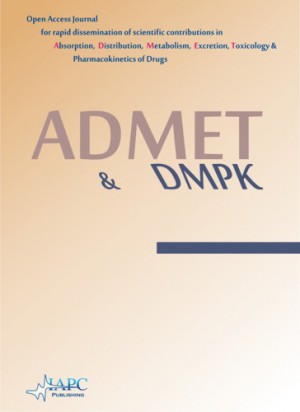
ADMET & DMPK
Yazarlar: ["Natalia Loginova", "Maxim Gvozdev", "Nikolai Osipovich", "Alina Khodosovskaya", "Tatiana Koval\u2019chuk Rabchinskaya", "Galina Ksendzova", "Dzmitry Kotsikau", "Anatoly Evtushenkov"]
Konular:-
DOI:10.5599/admet.1167
Anahtar Kelimeler:Silver,Phenolic compounds,Nanoparticles,Antimicrobial activity,BSA binding,Cytochrome c reduction
Özet: Novel Ag(I) complexes (2a–2c) with phenolic Schiff bases were synthesized using 4,6-di-tert-butyl-3-(((5-mercapto-1,3,4-thiadiazol-2-yl)imino)methyl)benzene-1,2-diol (1a), 4,6-di-tert-butyl-3-(((4-mercaptophenyl)imino)methyl)benzene-1,2-diol (1b), and 4,6-di-tert-butyl-3-(((3-mercaptophenyl)imino)methyl)benzene-1,2-diol (1c). They were examined by elemental analysis, FT-IR, UV-Vis, 1H-NMR spectroscopy, XRD, cyclic voltammetry, conductivity measurements, and biological methods. The complexes are characterized by distorted geometry of the coordination cores AgN2S2 (2c), AgNS (2b) and AgS2 (2a). These stable complexes were not typified by the intramolecular redox reaction in organic solvents resulting in the formation of silver nanoparticles (AgNPs). Antibacterial activity of 1a–1c and 2a–2c was evaluated in comparison with AgNPs and commonly used antibiotics. All the complexes were more active than the ligands against the bacteria tested (14), but they were less active than AgNPs and commonly used antibiotics. Both 1a–1c and their complexes 2a–2c exhibited the capability for the bovine heart Fe(III)-Cyt c reduction. The ligands 1b and 1c were characterized by the highest reduction rate among the compounds under study, and they showed a higher reducing ability (determined by cyclic voltammetry) as compared with that of their Ag(I) complexes 2b and 2c.